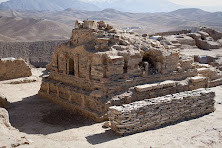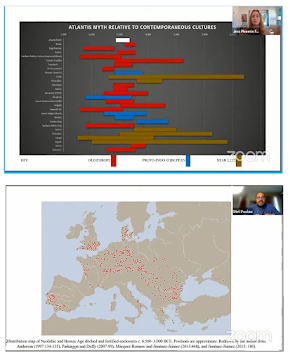Finger rings are a very popular collectable. There is an online database (
https://rings.guru/) with pictures and brief descriptions of large numbers of finger rings that has been in the news recently and it seems worth paying it some attention as it turns out to be quite important from several angles.
Although the text of this website can be read in a Russian or Ukrainian version, the server seems to be a Russian one. Its main focus is on finger rings in Russian and Ukrainian collections. Part of the items have been posted by the website administrator (Vladimir Belov) but registered members are invited to post their own items, including those that have been found recently by "metal detecting". In many cases the source (Источник) of the image is said to be Violity, a Ukrainian online sales venue that is infamous for the way it is used by so-called "black archaeologists" (looters with metal detectors who are illegally stripping the archaeological record for collectable and saleable items).
This database was set up quite recently. There is no 'about' page setting out its aims and principles. I suspect that this may be an offshoot of a discussion elsewhere, on a collectors' forum, or maybe Вконтакте (a Russian equivalent of Facebook) where there is a Перстень и Печать [ring and seal] group set up by Sergey Tulupov and Vladimir Belov, together with Anatoly Bablov,
Pavel Shevchenko and Boris Shirin (there are also related ring-collector clubs on Telegram and Viber). The Ring.guru site's News page starts with an entry on February 9th, 2020 that seems to indicate that the site was just starting up. The list is moderated, the administrators assign submitted entries to the correct section. Members have personal accounts where they can see their own rings and those that they have 'favourited'. There were promised 'instructions for entering rings on the site' and 'instruction-recommendation for photographing rings', and a section with details on how to support the project. By April 2nd 2020, there were 8000 rings on the database and (it seems) viewer figures of 25000. It was being planned to add a forum (it seems this has not been launched yet). On 5th April, they had their 100th registered member. The chief editor of the site was Vladimir Belov (while Sergey Tulupov, Boris Shirin, Pavel Shevchenko, Valery Agapov and Kirill Polevoy were expert consultants).
The database seems to have been started with material that come from the online catalogues of several official institutions. The abbreviation ГИМ means Государственный исторический музей, The State Historical Museum of Russia, just off Red Square in Moscow. Other material is accredited to a 'Федеральное государственное бюджетное учреждение культуры' [Federal State Budgetary Institution of Culture] and many of those have references to a catalogue entry under accession numbers that begin "ГМИИ КП" which seem to relate to the Pushkin Museum in Moscow [Государственный музей изобразительных искусств имени А.С. Пушкина].
Unfortunately there seems to be no easy way quickly to search the database to isolate those entered by members (eg metal detectorists) from the rest. Opening individual records takes quite a bit of time.
The material in 'Rings.guru' is in a variety of states of preservation. Some clearly are metal detected items with soil corrosion layers (patina) still on them. Others are possible metal detected items that have been heavily cleaned (and it seems a few that have been repatinated after this). There are some that may be antiques that have never been buried, while there are also some ancient/old looking rings that may be of modern production for the collectors' market (some of which are actually labelled as such).
This catalogue currently runs to 198 pages and contains 19764 items. The rings are arranged in groups related to date and ethnic affinities. The earliest are six Upper Palaeolithic bone rings from an official excavation, 114 that are Bronze and early Iron Ages "Ржв [ранний железный век] и Бронзовый век" (but these include for example items from ancient Egypt in Russian collections). There are 785 rings from 'antiquity' [Антика] (some from Violity of dubious authenticity, I would say - and there are some from the collections of institutions). Four rings are assigned to the Migration Period (two, I would say, very dubiously so, one from the Metropolitan Museum in New York and one from eBay).
The main body of the database consists of a series of rings that include many that seem to come mainly from private collections and result from artefact hunting. Most often there is just the bald information what it is, the proposed date, but nothing about where it was found (in many cases the provencnce is given as Violity).
The chronological spread of these items is of interest, showing what can be found in eastern Europe and what is collected there. There are 635 assigned to "кочевников" the nomad peoples of the steppes and southern Russia (of varying date), 2714 other ones are assigned to the pre-Mongol period [домонгольского периода] that is, roughly "Kievan Rus", 3813 to the period (c
1240-1480+) of the ('Mongol') Horde [ордынского периода]. These are followed by later items, 6005 are dated to the early modern period, 15th to 17th century [раннего нового времени 15-17 век], 3794 to the 'recent' category end of 17th to 19th centuries [Перстни позднего нового времени конец 17-19 век], 774 are deemed nineteenth century, 268 are 20th and 21st century, there is an interesting group of 64 items that are labelled replicas/copies [
Реплики и новоделы старинных перстней] which is an interesting, if incomplete, glance at the range of fakes circulating in the region. Another category that might interest collectors is the section showing eight
Реставрация и ремонт средневековых перстней, showing repaired and rebuilt medieval rings [though I think not in all cases was the starting point of a fantasy piece actually originally a ring]. A
section at the end presents 53 rings that were found in groups (including a hoard of prehistoric gold rings seen on Violity). There is a section on 379 rings "from western auctions" [Перстни с западных аукционов] but actually including twitter etc. This is not much use to us as it's just about types, rather than providing information about the auctions themselves, for example there is
the Saffron Walden ring there as #16723.
There are also 372 seal matrices of several types [
Печати].
The site has a section on the
literature of rings and ring collecting (books, catalogues, scientific papers). Some can be bought, some can be downloaded. Members are encouraged to upload items for dowloading (while bearing in mind copyright issues).
This web resource has only limited possibilities for researchers, due to the lack of information that goes beyond the merely artefactual. Even the identification and dating should be treated with a pinch of scepticism. What, however, is its main interest is that it catalogues items as being recent metal detected finds or objects sold through Violity at dates that are well after those dates claimed by some dealers that these very same objects had already been in "old collections" outside Eastern Europe, showing that these collection histories were complete fictions. This database is an important resource for those doing provenance research on items on today's no-questions-asked antiquities market. Interestingly, as will be seen in another post, collectors themselves are now making use of this to pick up cases of apparent western dealers' fictions.



















